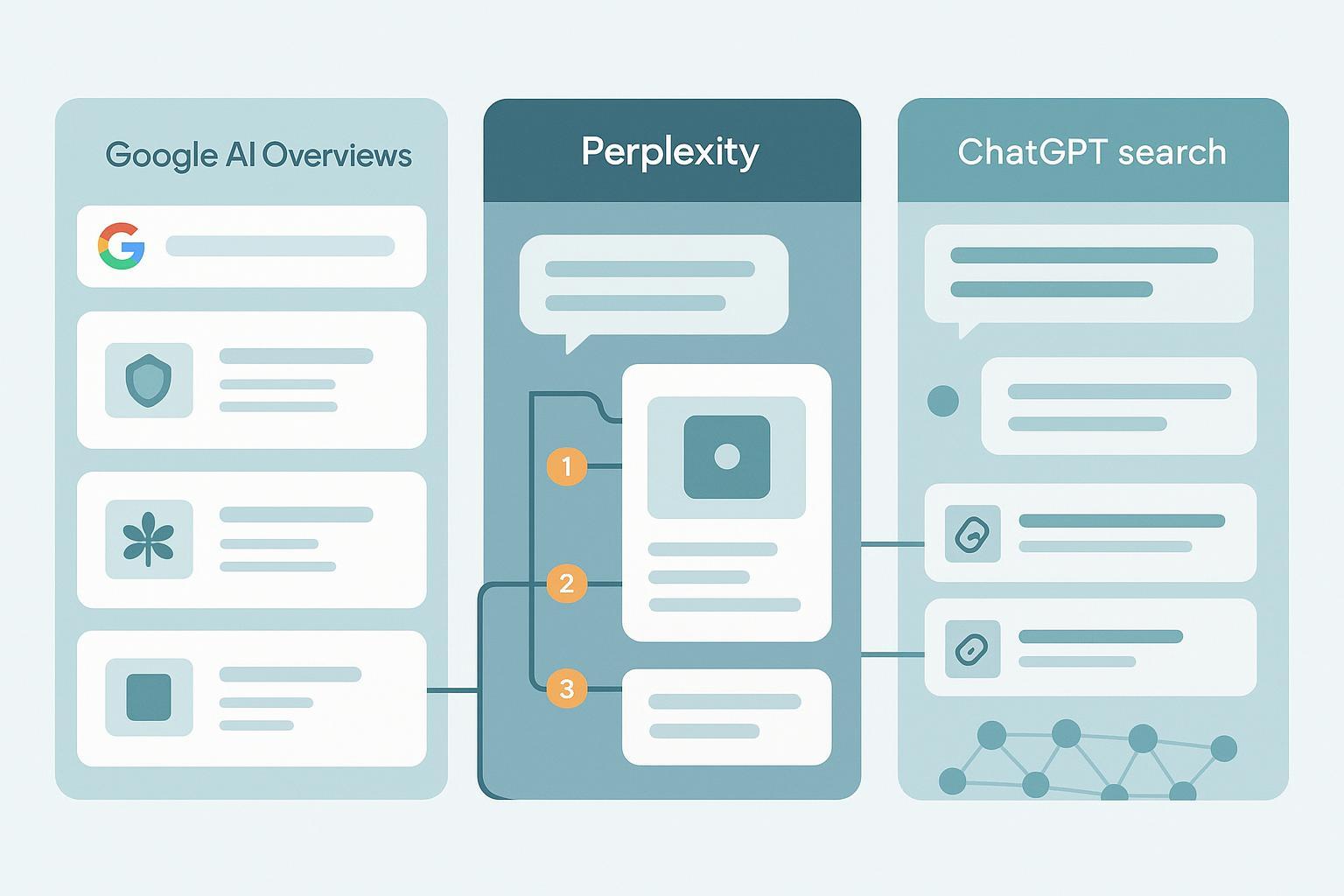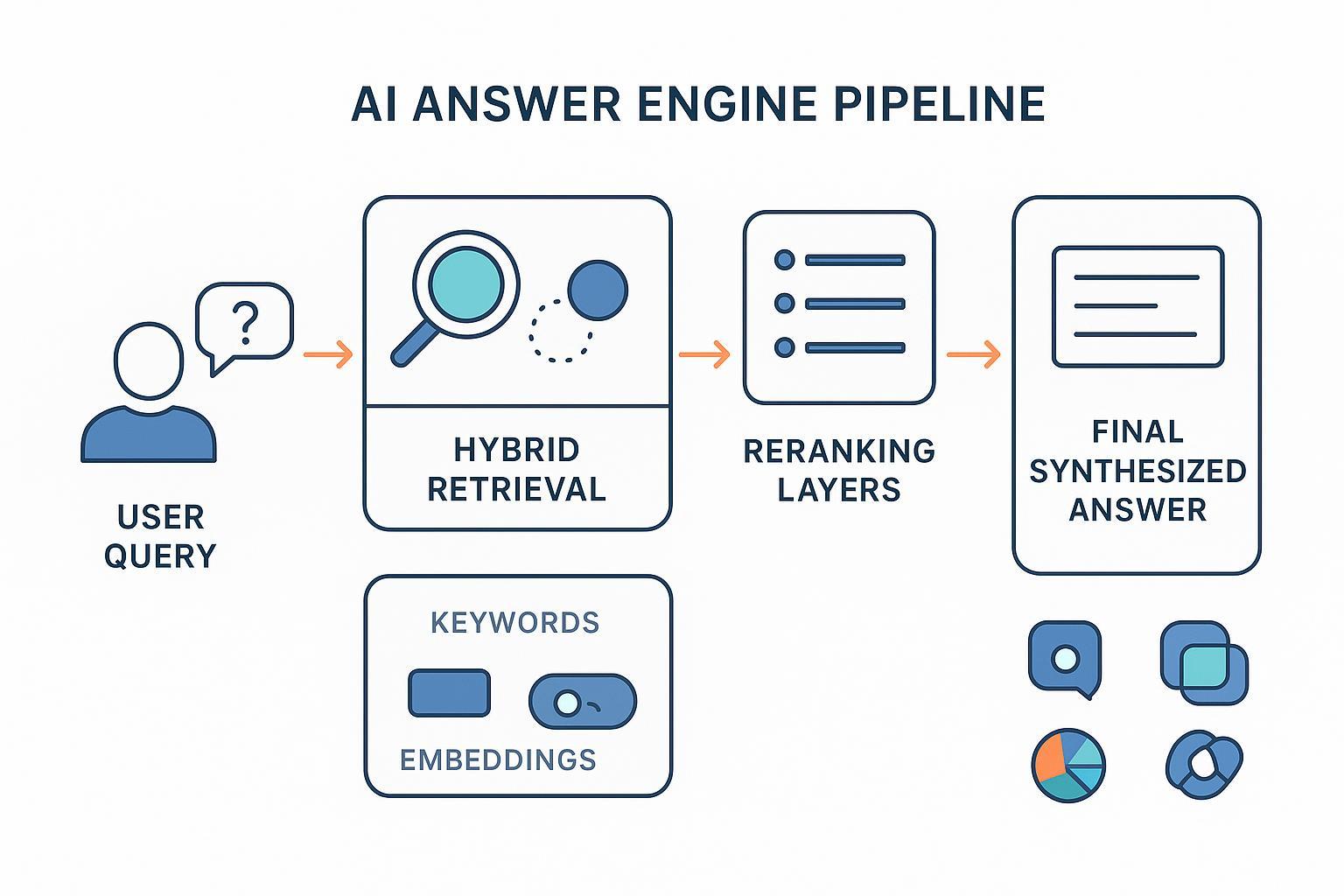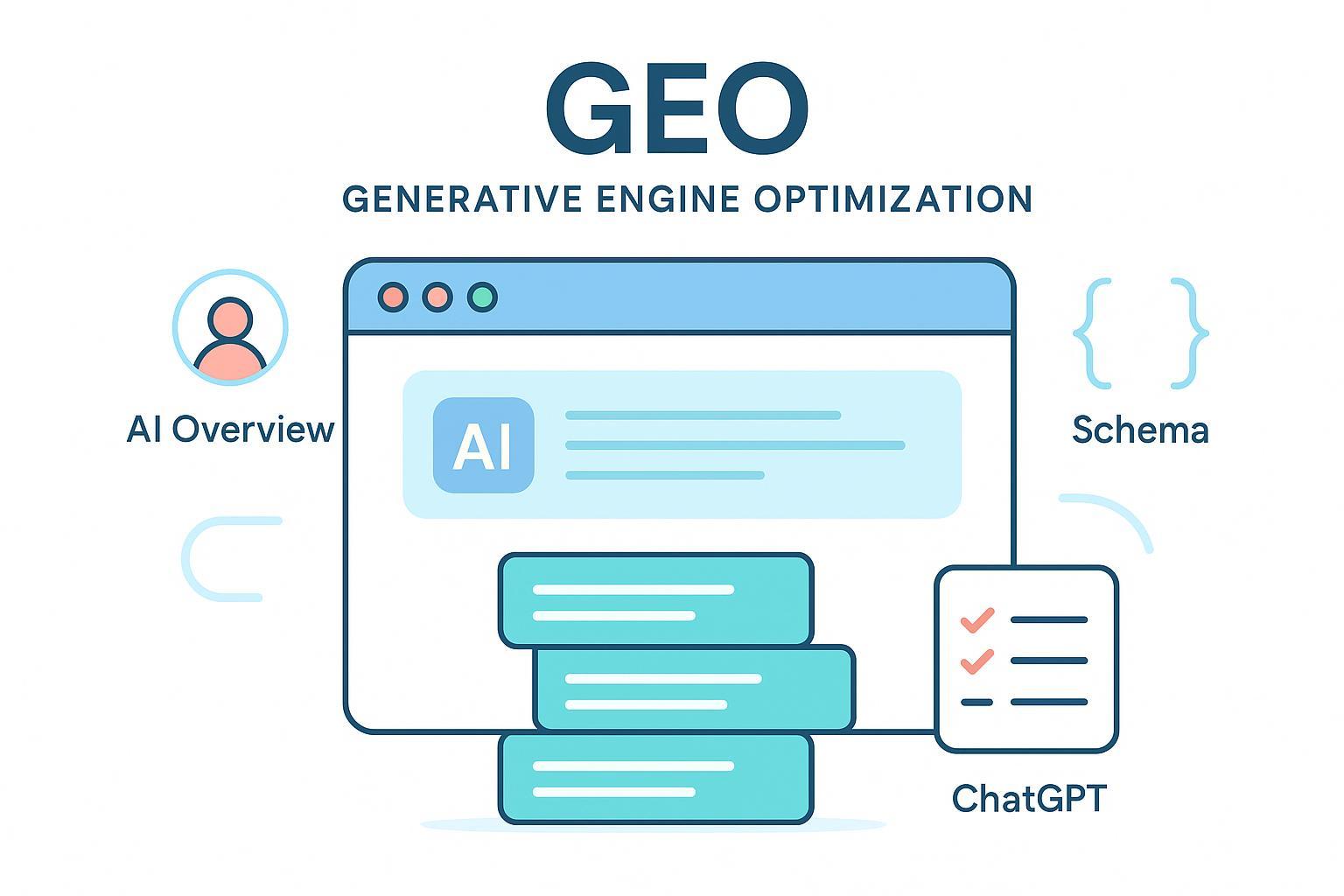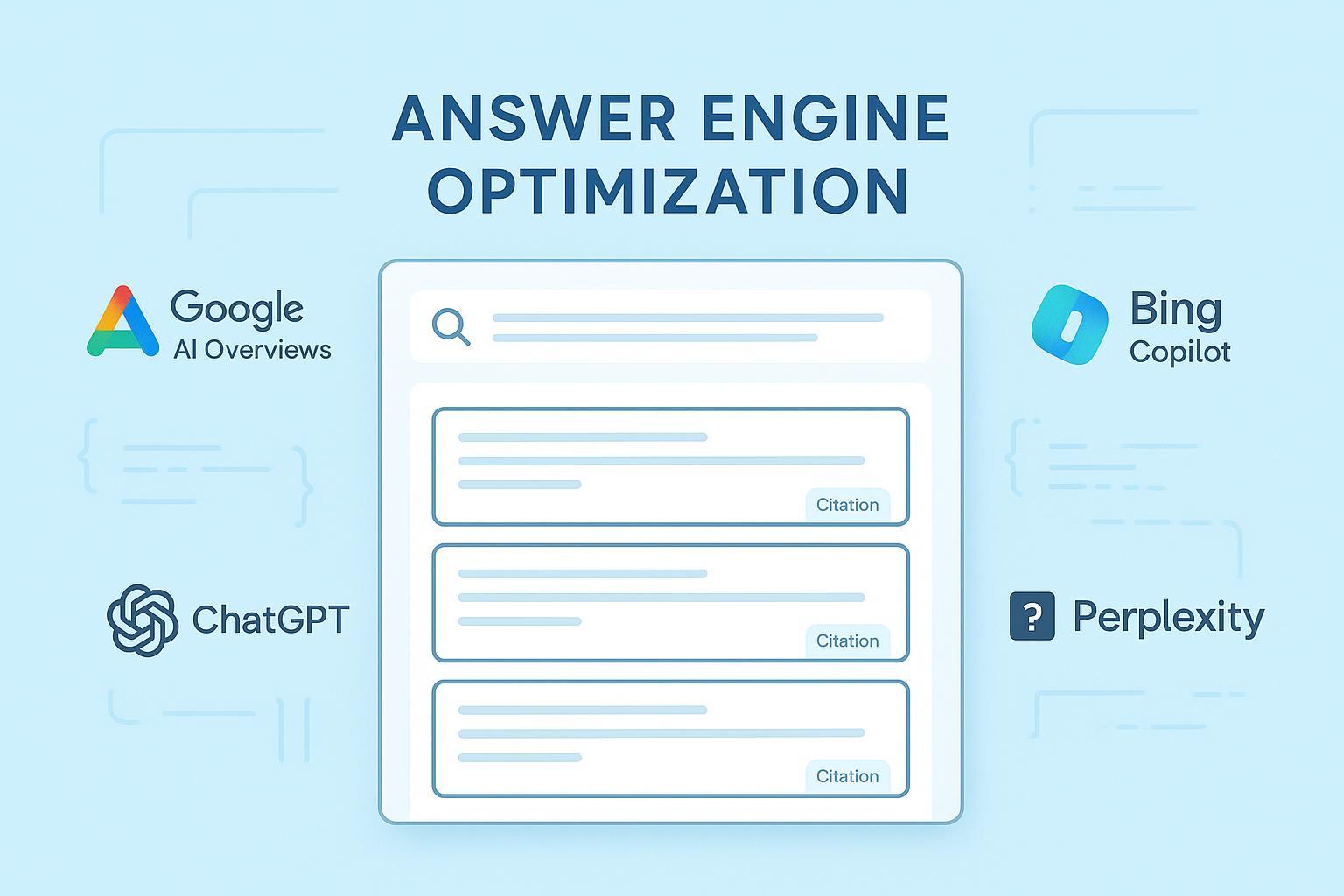2025 GEO Best Practices for Generative AI Search Optimization
Discover proven GEO best practices for optimizing content, citations, and schema in generative AI search. Actionable workflows, monitoring, and 2025 benchmarks for advanced practitioners.

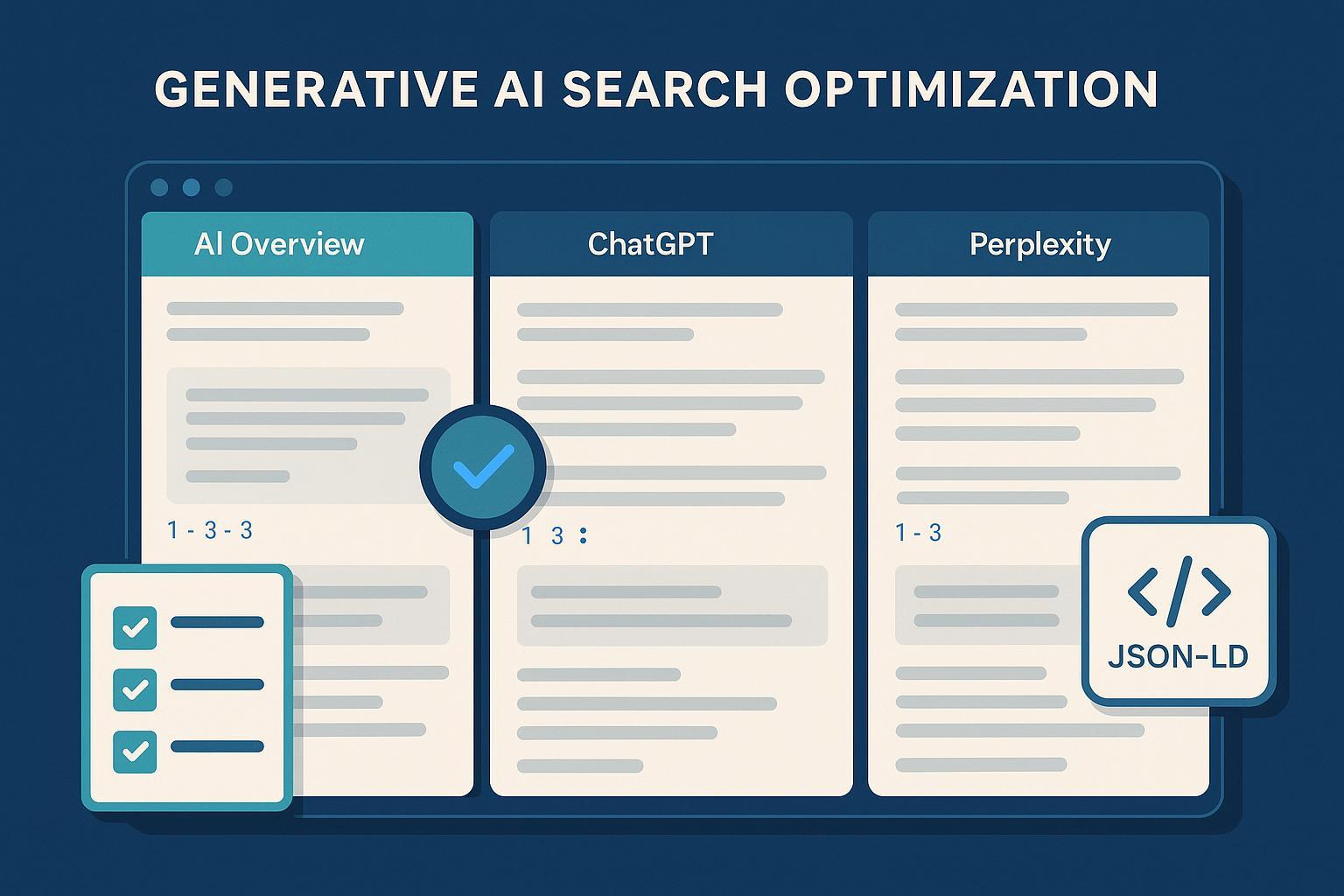
If you’re optimizing only for blue links, you’re leaving visibility on the table. In 2025, AI answer engines decide what users see first—often before any click. This guide distills field-tested GEO (Generative Engine Optimization) practices that consistently increase your odds of being selected, cited, and represented accurately across AI Overviews and chat-style engines. For fundamentals, see this concise Generative Engine Optimization (GEO) explainer to align teams on terminology before you operationalize.
What’s different about GEO (and why it matters now)
- The outcome shifts from “rank for clicks” to “get cited in answers.” Google’s AI Overviews and other engines synthesize content and surface a handful of sources. Eligibility and display mechanics for Google’s AI features are documented in AI features and your website (Google, 2025).
- Engine behavior and usage are expanding; Google noted broader AI-in-Search rollouts and growing surface area in its Search AI mode update (2024–2025).
- Expect traffic mix changes: Several 2024–2025 studies show AI Overviews materially affects click patterns. For example, Semrush’s 2024 analysis found notable CTR shifts on queries that trigger AI Overviews; details are in the Semrush AI Overviews study (2024). Treat GEO as a complement to (not a replacement for) SEO.
Implication: To be chosen by AI systems, your content must be unambiguous, citable, and fast to parse by machines—then updated and monitored like a product, not a static page.
Principle 1: Structure answers for machines first, then humans
What consistently works in practice:
- Lead with a 50–150 word direct answer for each question. Place it near the top, before narrative context.
- Reinforce with a list, short table, or glossary stub so the model can extract entities and relations quickly.
- Consolidate canonical definitions on dedicated pages; avoid duplicating slightly different definitions across posts.
Example answer block pattern:
Question: What is a zero-downtime deployment?
Answer (85 words): A zero-downtime deployment is a release method that serves traffic without interruption by preparing a new version alongside the current one, then shifting traffic atomically. Core tactics include blue-green or rolling updates, backward-compatible database changes, and health-checked load balancing. Key failure points: long migrations, sticky sessions without coordination, and cache invalidation. Measure success by error rate, latency, and time-to-recovery within SLOs.
Keep answers factual, neutral in tone, and free of fluff; reserve opinions for later sections.
Principle 2: Add the right schema—validate, don’t stuff
In GEO, schema is less about “winning a rich result” and more about unambiguous machine parsing. Prioritize FAQPage, HowTo, Article, Product/Review where relevant. Validate everything and mark up only visible content.
Minimal FAQPage JSON-LD template:
{
"@context": "https://schema.org",
"@type": "FAQPage",
"mainEntity": [
{
"@type": "Question",
"name": "What is generative engine optimization (GEO)?",
"acceptedAnswer": {
"@type": "Answer",
"text": "GEO is the practice of structuring, attributing, and refreshing content so AI answer engines can accurately parse, cite, and synthesize it."
}
}
]
}
Implementation checklist (used in production):
- Generate JSON-LD via your CMS or a build step; keep it synchronized with on-page content.
- Validate in Google’s Rich Results Test; fix all warnings that indicate ambiguity.
- Add change logs and last-updated timestamps to high-value pages.
Principle 3: Make E-E-A-T and provenance explicit
- Bylines with credentials, contact info, and a short “why this author” blurb.
- In-line citations to primary sources (standards, official docs, original studies) using footnotes or short reference lists.
- Timestamp every substantial update. For AI features eligibility and quality expectations, review AI features and your website (Google, 2025) and maintain people-first standards.
Platform-specific tactics that actually move the needle
Google AI Overviews (AIO)
- Eligibility: content must be indexable and meet Search Essentials; there are no special tags for AIO beyond high-quality, helpful content. See AI features and your website (Google, 2025).
- Page patterns that get cited more often in practice: succinct Q&A pages, authoritative glossaries, and data-backed explainers with clear sourcing.
- Expect overlap but not parity with organic: third-party analyses show mixed alignment between AIO sources and top organic results; SEJ reported substantial but incomplete overlap in 2024, summarized in the SEJ overlap analysis (2024).
Perplexity
- Perplexity emphasizes transparent citations and maintains a formal publisher program, announced in 2024 and expanded through 2025; details and terms are in the Perplexity Publishers’ Program.
- What works: highly factual pages with concise summaries, tables, and diagrams; attach datasets or downloadable references when possible.
Bing/Copilot
- Accelerate freshness with IndexNow. In practice, submitting updates helps Copilot/Bing reflect revisions faster, especially for rapidly changing facts. Get started via IndexNow (Bing).
- Maintain robust schema and clean sitemaps; Copilot exposes sources, so clarity and authoritative coverage matter.
OpenAI/ChatGPT
- Visibility depends on content quality and crawler access. If you allow crawling, ensure public FAQs and explainers are crystal clear and well sourced. If you need to restrict, configure robots and WAF rules. OpenAI’s crawler details are in the GPTBot documentation.
Freshness and update cadence
What we’ve found reliable across programs:
- Treat key pages like products. Assign owners, set a quarterly review schedule, and maintain a short change log.
- For fast-moving facts, review monthly; for stable frameworks, quarterly is fine.
- Use IndexNow where applicable to reduce lag between updates and AI surfacing.
- Retire or consolidate near-duplicate content to reduce ambiguity; maintain a redirect and canonical plan.
A BrightEdge analysis marking the first year of AIO’s rollout noted significant changes in search behavior and usage patterns in 2025; see the BrightEdge 2025 press release for context when planning your review cadence.
Monitoring and optimization: a weekly/monthly loop
Track these KPIs per platform (Google AIO, Perplexity, ChatGPT, Bing/Copilot):
- Citation rate: How often your pages appear as sources.
- Source share: Your proportion among cited domains for target topics.
- Sentiment: Positive/neutral/negative tone when your brand is summarized.
- Query coverage: The breadth of questions where you’re referenced.
Weekly workflow (what actually sticks):
- Review newly gained or lost citations; inspect the specific answer text.
- Tighten answer blocks (50–150 words), add or correct schema, and upgrade sourcing.
- Fill content gaps with Q&A stubs, tables, or short glossaries.
- Refresh outdated stats; submit updates via IndexNow if relevant.
- Conduct targeted outreach to authoritative organizations likely to be cited (standards bodies, associations).
Monthly workflow:
- Analyze KPI trends, then run a failure audit on declining pages.
- Expand entity coverage (e.g., new glossary entries) and add structured data for new templates.
- Review robots/WAF logs for AI crawlers; tune allow/deny rules.
Workflow example: cross-engine monitoring and iteration
Use a monitoring platform to track brand citations across Google AI Overviews, Perplexity, and ChatGPT; flag negative sentiment; and surface newly cited pages to prioritize updates. For instance, Geneo can centralize AI visibility tracking, sentiment analysis, and historical query comparisons to help teams run this weekly loop efficiently. Disclosure: The author includes Geneo as an illustrative example.
Practical sequence we’ve implemented:
- Pull weekly citation and sentiment changes by topic.
- Map each change to the underlying page; inspect the specific answer excerpt.
- Update answer blocks, add missing FAQ/HowTo schema, and append primary-source citations.
- Queue re-indexing (sitemaps and IndexNow), then re-check presence after 7–10 days.
Robots.txt and crawler controls (with realistic caveats)
Robots.txt is advisory; enforce sensitive exclusions with a WAF or server rules. Common patterns:
Block OpenAI’s GPTBot entirely:
User-agent: GPTBot
Disallow: /
Block GoogleOther (non-Search Google crawlers):
User-agent: GoogleOther
Disallow: /
Block Applebot:
User-agent: Applebot
Disallow: /
Block Amazonbot:
User-agent: Amazonbot
Disallow: /
Keep a separate allowlist for public FAQs or documentation if you want accurate brand representation in LLM answers while protecting sensitive paths.
Multimodal and voice GEO
- Images and video: Provide transcripts, descriptive alt text, and ImageObject/VideoObject schema. Host canonical media on pages with strong E-E-A-T to increase trust.
- Voice and local: Optimize for conversational queries; ensure your business listings (NAP, hours, reviews) are pristine for “near me” assistant queries. HowTo/FAQ markup improves scannability for voice responses.
Outreach and attribution that creates citation pathways
- Publish data-backed explainers with downloadable tables or CSVs; AI systems favor clear, citable facts.
- Reference standards (e.g., schema.org specs, official vendor docs) and include short footnotes.
- Proactive outreach: pitch expert commentary to industry publications; request accurate citations on third-party roundups that AI engines often pull from.
- Corrections: When an AI answer misattributes a fact, publish a short corrective update on your page and reach out to the cited publisher with precise wording.
Common failure patterns (and fixes)
- Ambiguous answers: Your intro rambles and buries the lead. Fix by adding a crisp 50–150 word answer block at the top.
- No schema or invalid schema: Add FAQPage/HowTo where fitting; validate; remove anything that’s not visible on-page.
- Stale stats: Schedule quarterly content reviews; for fast-changing topics, review monthly and document changes.
- Weak authorship: Add bylines with credentials, an author bio, and a clear editorial policy.
- Duplicative pages: Consolidate and redirect; maintain a single canonical definition per entity.
Boundaries, trade-offs, and what to watch in 2025
- Traffic composition will change: Some informational queries will deliver fewer clicks; however, deeper-funnel visits can become more qualified when your sources are cited directly in answers.
- Legal and ethical considerations: If you restrict crawlers, expect reduced presence in chat engines; if you allow, ensure only non-sensitive, high-quality content is accessible.
- Internationalization: Local-language Q&A pages with proper hreflang; region-specific attributes in product markup (e.g., priceCurrency) to avoid mismatches.
- Re-audit quarterly: Platform behavior is evolving—keep a change log and revalidate schema, robots rules, and KPIs.
Short CTA: If you’re standing up a GEO monitoring loop and need a single place to watch citations and sentiment, consider Geneo as part of your stack.
References for practitioners
- Google’s guidance on eligibility and behavior of AI features: AI features and your website (2025)
- Google’s product update covering AI mode in Search (2024–2025): Search AI mode update
- Semrush analysis of AI Overviews’ impact on SERPs and CTR (2024): Semrush AI Overviews study
- Overlap between AI Overviews and organic results (2024): SEJ overlap analysis
- Perplexity’s official publisher program details (2024–2025): Perplexity Publishers’ Program
- Rapid indexing mechanism for Bing and partners: IndexNow
- OpenAI’s crawler policy: GPTBot documentation


